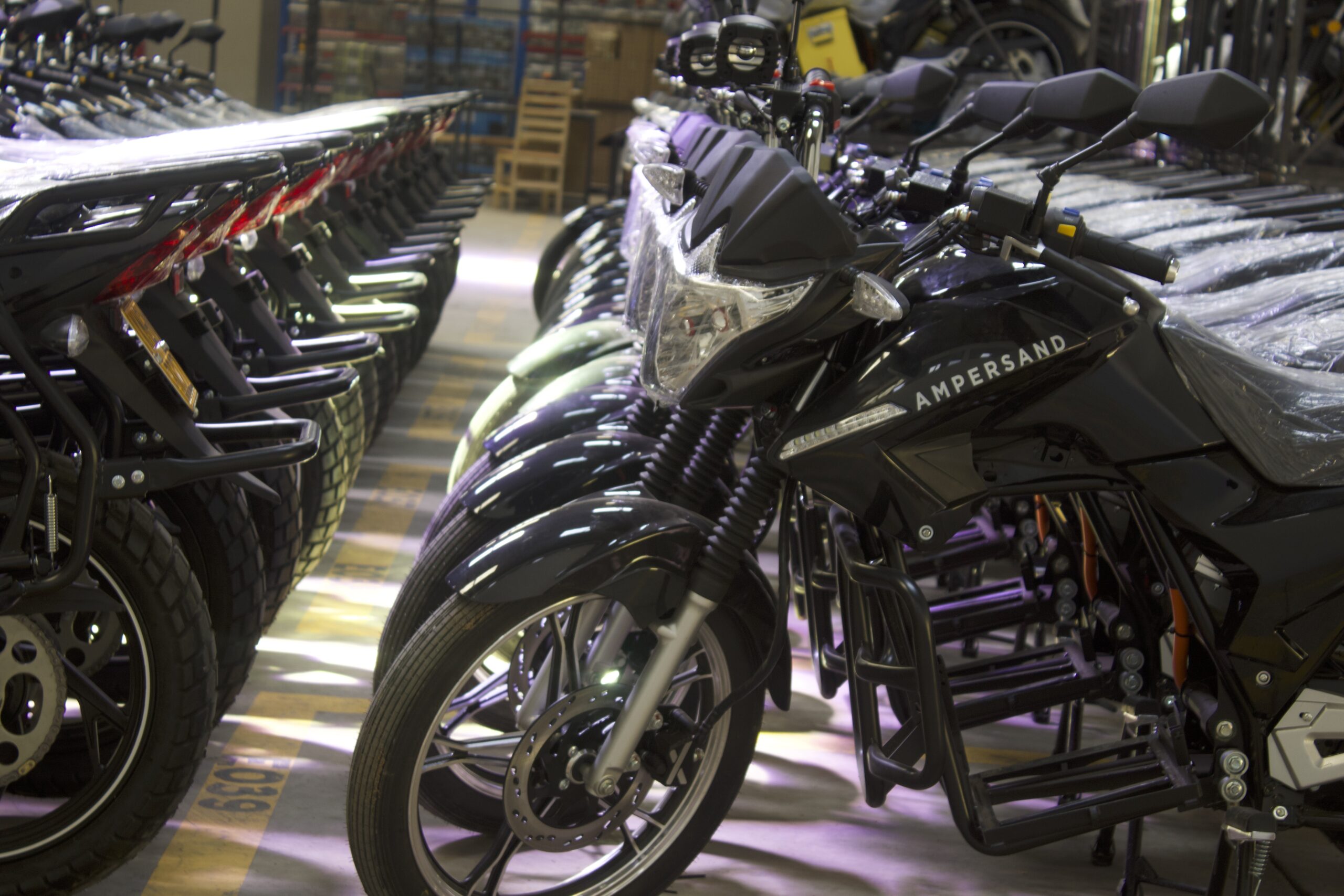Support CleanTechnica’s work through a Substack subscription or on Stripe.
This week, Ferrari offered a glimpse of its first all-electric car, which will be called Elettrica. The car is supposed to go on sale — to those who can afford it — in the fourth quarter of 2026. At a capital markets event last week, the automaker said the car will have an electric motor for each wheel with a combined output of more than 1000 horsepower — enough to propel it to 100 km/h from a standing start in 2.6 seconds. Top speed is said to be 310 km/h (192 mph).
But that wasn’t really what investors were there to hear. They wanted to know how the company plans to address the electric car future and were disappointed to learn that now the product mix will be 20% BEVs, 40% hybrids, and 40% combustion engines. Shortly after the meeting, its share price plunged by 11%, according to Germany’s Manager Magazin. Ferrari already has hybrid models in its lineup and plans to launch four new models every year until 2030.
Ferrari Projects Rising Profits
Bloomberg reports that the company — which has a market capitalization higher than Volkswagen Group, Porsche, Mercedes Benz, or BMW — expects its adjusted earnings before interest, taxes, depreciation, and amortization to increase by about one-third over the next five years. Net revenue this year is forecast to equal or exceed €7.1 billion and its adjusted EBITDA is now expected to hit €2.72 billion. Revenues are expected to reach €9 billion and EBITDA to hit €3.6 billion by 2030.
The adjustment to its production plans is expected to make it possible for Ferrari to sell more combustion engine models that have a higher profit margin. Since its initial public offering 10 years ago, Ferrari has poured €6.5 billion into capital spending, doubled its workforce to about 6,000, and launched 41 new sports cars. Executive Chairman John Elkann said at the capital markets meeting, “The new electric Ferrari once again shows how we merge technological rigor, design creativity and artisanal excellence as we move forward.”
The Elettrica’s range will be above 530 kilometers, Ferrari said, which is comparable to a dual motor Tesla Model Y. Other features will be revealed in stages. The new interior will debut early next year, with the full car being unwrapped in the spring. Pricing has not yet been disclosed.
A Cautious Approach

Bloomberg says the company has taken a cautious approach to electrification, focusing first on building hybrids, which now account for more than 50% of sales volume. Other luxury carmakers, including Porsche and Mercedes-Benz, have struggled with the electric transition, as wealthy buyers balk at switching over to cars with plugs.
Ferrari’s prior EV plan was announced in June 2022, when environmental concerns were higher on the agenda of carmakers and the shift to electric cars appeared imminent. Since then, the political climate has changed, with security and trade at the forefront.
Nevertheless, the Elettrica marks a milestone for Ferrari, and executives said they were committed to bringing the company’s “unparalleled sportiness into the electric era without compromises, and ensuring clients have a differentiated offering to choose from.”
To retain the look and feel of its combustion forebears, Ferrari has infused the model with technology derived from its Formula 1 racing experience, hybrid models like the SF90 Stradale, and the four-door Purosangue. The Elettrica will use Ferrari’s active suspension system that continuously adjusts each wheel to manage cornering and ride comfort. The 122 kWh battery is integrated into the chassis to promote precise handing and greater stability.
Sound is a big part of the Ferrari experience, so the company has developed a system that amplifies vibrations from the electric motor and other powertrain components to replicate the sensation of shifting without the mechanical linkage to provide some excitement for the driver.
Ferrari is trying to regain momentum in China, where its sales have stagnated along with a broader luxury slowdown. China CEO Benedetto Vigna thinks EVs may pave the way for expanded sales in the Chinese market because they are taxed at a lower rate than conventional cars. Mercedes and BMW have also lost ground in China amid fierce competition led by BYD and Xiaomi. BMW shares declined this week after it forecast weak sales in China and higher tariff costs.
Susy Tibaldi, a luxury car analyst at UBS, told Bloomberg that the first EV from Ferrari will first need to win over new customers and that “China is likely to be central to that strategy,” since Chinese customers are more receptive to EVs than buyers in some other countries.
The Sound Of Ferrari
When Ferrari began, it was all about the engine. Its trademark quickly became the shriek of a high-revving 12-cylinder engine that left the sound of power and money in its wake. I went to college in a small town in New Hampshire near the Vermont border. One crisp winter’s night, when the stars seem close enough to touch, I was walking outdoors when a Ferrari sprang to life nearby and headed down the hill and across the bridge into the green mountains of Vermont.
The cold meant that sound traveled further than normal, which meant I could hear the Ferrari running up and down through the gears as it climbed the hills and descended into the valleys beyond. The sound of that engine brought joy to the heart of this impoverished college kid.
Years later, I went to a number of Formula One races at Watkins Glen in New York. At the time, the race cars used a variety of engines — including an H-16 at one point — but the most popular choice was the Cosworth V-8. You could could hear the heavy beat of those V-8s coming down the front straight, but an octave higher was the wail of the V-12 Ferraris zinging toward you at redline.
Engines Are So Yesterday
Cars are not about engines anymore. Jaguar built its reputation on that great thumping twin cam straight-six engine designed by William Lyons in the 1930s. When the company got bought by Ford, those engines were replaced by garden variety V-6 engines from the Ford parts bin and the magic was lost. Jaguar has been trying to find its way forward ever since.
Nobody needs a Ferrari. It is not a car anymore, it is a brand that caters to an extremely wealthy clientele. If you thought horse racing was expensive, owning a Ferrari built for competition is an entirely different level of financial commitment.
So, what is the market for a battery-electric Ferrari? Good question. It will never have the visceral appeal of a car with a highly tuned combustion engine. BYD now makes a model that is more than 100 mph faster, and several companies — including Tesla — sell cars that can blast to 100 km/h in less than 2.6 seconds. But if you have to ask why anyone would want a Ferrari, you are simply not part of the company’s target demographic.
If you want to drive a symbol that shouts “I have more money than any of you plebeians,” a Ferrari is always a good choice. Whether that is enough to sustain the company’s stratospheric market capitalization remains to be seen.
Sign up for CleanTechnica’s Weekly Substack for Zach and Scott’s in-depth analyses and high level summaries, sign up for our daily newsletter, and follow us on Google News!
Have a tip for CleanTechnica? Want to advertise? Want to suggest a guest for our CleanTech Talk podcast? Contact us here.
Sign up for our daily newsletter for 15 new cleantech stories a day. Or sign up for our weekly one on top stories of the week if daily is too frequent.
CleanTechnica uses affiliate links. See our policy here.
CleanTechnica’s Comment Policy




